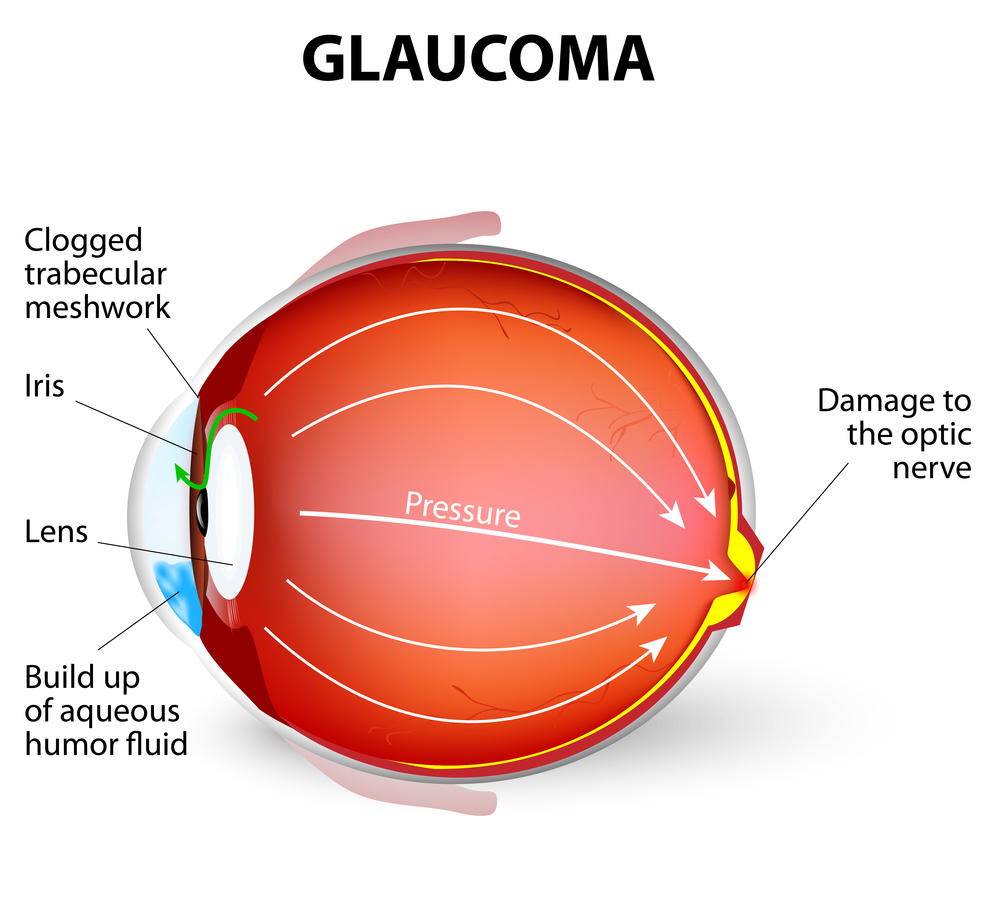
Did you know that one of the leading causes of blindness in adults over 60 is glaucoma? Glaucoma is a highly prevalent age-related eye condition that damages the optic nerve, causing vision loss.
The thing that’s most concerning about glaucoma is it typically won’t show any symptoms until damage has already occurred, including irreversible vision loss. For this reason, glaucoma is often called the Silent Thief of Sight.
Although this may be scary to learn, you can treat glaucoma to preserve your remaining vision. Treatment, especially in the early stages, can drastically slow glaucoma’s progression, preserving your vision for years to come.
Keep reading to learn more about glaucoma and 7 treatment options for this eye condition.
What is Glaucoma?

Glaucoma refers to the name given to a collection of eye conditions that cause damage to the optic nerve. The optic nerve connects your eye to your brain.
When it becomes damaged, the optic nerve can’t tell your brain everything you see. Patients who experience vision loss from glaucoma start to lose their peripheral vision first.
As the optic nerve becomes more damaged, their vision will start tunneling, significantly affecting their vision. Glaucoma is usually caused by a buildup of pressure in the eye, known as intraocular pressure.
Your eye is filled with fluid called aqueous humor. This fluid is constantly being produced and flushed through and out of the eye to stay healthy.
Pressure in the eye rises when the drainage channels through which the aqueous humor escapes the eye become blocked off. The rising pressure pushes on the optic nerve.
The higher the pressure is and the longer it remains high, the more it strains the optic nerve, eventually damaging it. There are several kinds of glaucoma that patients can have.
Open-Angle Glaucoma
Open-angle glaucoma is the most common type of glaucoma. It occurs when the primary drainage angle, which exists between the iris and cornea, remains open.
But the system of smaller channels in the eye, called the trabecular meshwork, becomes blocked. If the trabecular meshwork becomes blocked, it gradually increases eye pressure and incremental damage to the optic nerve.
It can take years for open-angle glaucoma to cause any noticeable symptoms. However, any damage to the optic nerve is irreversible, meaning vision loss is also permanent.
Angle-Closure Glaucoma
The second most common type of glaucoma, angle-closure glaucoma, is much rarer. A little less than one in ten glaucoma patients have angle-closure glaucoma.
This type of glaucoma occurs when the iris bulges, closing off the primary drainage angle. When this happens, pressure in the eye tends to rise much more quickly.
It can even happen suddenly, which is called acute angle-closure glaucoma. Unlike most other forms of glaucoma, this sudden rise causes noticeable symptoms, including blurry vision, eye pain, headache, nausea, and vomiting.
Immediate medical intervention is needed to relieve the pressure, so if you experience these symptoms, you should go to the hospital immediately. Angle-closure glaucoma is considered a medical emergency.
Glaucoma Prevention

There is no way to prevent glaucoma. However, the best way to prevent vision loss from glaucoma is to receive a diagnosis and treatment during its early stages.
The most effective way to do this is by having eye exams regularly. Eye exams are the only way to diagnose glaucoma before symptoms develop.
Your ophthalmologist at St. Luke’s at The Villages can test your intraocular pressure and look at your optic nerve for any early signs of glaucoma. How often you should have eye exams depends on various factors, which your ophthalmologist will review.
However, if you’re determined as someone with an increased risk for glaucoma, you should have annual eye exams. Talk to your eye doctor about your risk for glaucoma and other eye conditions to determine the best schedule for setting up eye exams at St. Luke’s at The Villages.
If you have glaucoma and receive an early diagnosis, your ophthalmologist can then recommend the most effective treatment in the early stages. Depending on the severity of your glaucoma, they may recommend one or several of the following treatment options:
1. Prescription Eye Drops

The most common treatment for glaucoma is eye drops. These prescription eye drops lower your eye pressure.
In the early stages, this may be the only treatment you need. You may even be able to lower your eye pressure with these drops before experiencing any optic nerve damage.
These eye drops usually require indefinite use to keep your eye pressure from rising further.
2. Oral Medication
Sometimes, oral medication is prescribed in combination with eye drops. Prescribing oral medication with eye drops is usually done to lower eye pressure more quickly for patients with very high eye pressure, especially those with angle-closure glaucoma.
3. Surgery
There are several kinds of glaucoma procedures. However, all of these procedures aim to lower eye pressure.
4. Trabeculectomy
A trabeculectomy is a surgery that creates a small opening in the eye, allowing fluid to drain through it. It can be used to treat open-angle and angle-closure glaucoma.
5. Implants
Several kinds of small implants called shunts can be used to help drain fluid in the eye. These shunts are surgically implanted into the sclera, the white part of the eye. The shunt can access the eye’s interior so fluid can drain through it and help reduce intraocular pressure.
6. MIGS
MIGS stands for Minimally Invasive Glaucoma Surgeries. These procedures use similar techniques to trabeculectomy and may involve implants.
They are less invasive, and the implants used are much smaller. While these procedures are suitable for many patients with mild glaucoma, they often don’t lower eye pressure enough for patients with moderate to severe glaucoma.
7. Laser Therapy
The most common laser therapy used for glaucoma is called trabeculoplasty. It’s primarily used to treat open-angle glaucoma and is very minimally invasive.
The eyes are numbed, and then a laser is shined into the eye. The laser targets the trabecular meshwork, allowing it to drain fluid better while reducing intraocular pressure.
Do you need to treat glaucoma? Learn more about the best way to treat this eye condition by requesting an appointment at St. Luke’s at The Villages in Lake Sumter Landing, FL, today!









